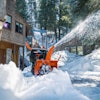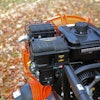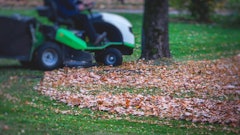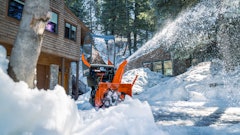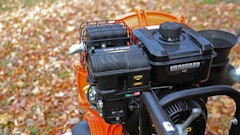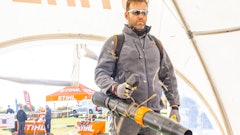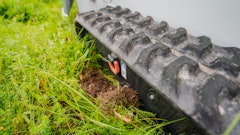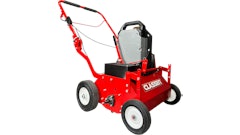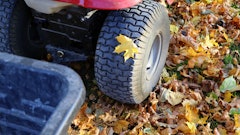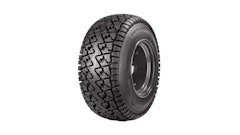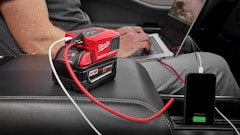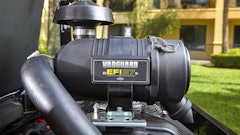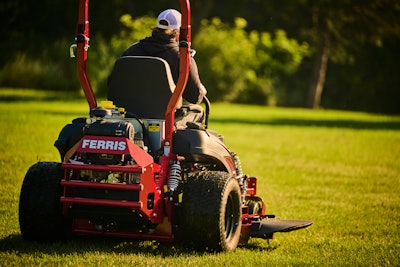
You’ve heard the expression that what you put in is what you get out. Engines are no exception.
"Just like a car, your landscaping equipment needs regular checkups to stay in top shape,” says Randy Lockyear, senior director of sales at Vanguard.
Experts from Honda, Rehlko and Vanguard explain why routine maintenance will result in strong output for the entire season.
Routine maintenance
For seasonal equipment, maintenance checks should be done at the beginning of the season, while for commercial and rental equipment under nearly constant usage, checks should be performed once a year or after 200 hours of usage, says Colin Miller, assistant manager, public relations, Honda Power Sports & Products.
Experts list the following routine maintenance to be performed:
- Check the oil level. Start by removing the dipstick, wiping the oil from it and inserting it back into the engine. Be careful NOT to screw it in. Then, remove the dipstick to check the level. Add oil if necessary, but to prevent spills, don’t overfill. Check the owner’s manual for the recommended type of oil; oil should be changed once per season or more often if the equipment is used more frequently. Generally, smaller single-cylinder engines need an oil change annually, while for larger v-twin engines, oil changes are typically needed every 100 hours, but check recommended intervals in the owner’s manual. Base your decision on recommended intervals found in the owner’s manual. If you changed the oil before storing the equipment for the winter, another oil change is not necessary.
- Inspect and replace air filters and spark plugs according to the usage hours and manufacturer’s recommendations. Smaller single-cylinder engines regular air filter checks and replacement at least every other year, and larger engines may require a new air filter every 100 hours. However, air filter replacement schedules vary, so it’s best to follow the manufacturer’s instructions. Spark plugs should be inspected yearly. Spark plugs for larger commercial engines may require an annual replacement. No matter what type of engine a landscape professional is operating, it’s a good practice to check the oil level and air filter condition daily before use.
- Inspect for loose bolts and fasteners as well as fuel and oil leaks. Give the engine a quick 60-second look for fluid leaks or loose or missing parts.
- Clear debris and other contamination. Dirt and debris can lead to clogging of the carburetor passages and affect engine performance. Don’t forget to also check for debris buildup under the fan shroud, as this can obstruct airflow and cause the engine to overheat. For larger engines, regular valve clearance inspections are crucial for optimal performance and efficiency.
- Inspect the wiring of the engine. Animals such as mice can climb in and make a nest over the winter. Inspect the engines for signs of moisture or potential wear.
- Proper fuel storage is also key to preventing engine problems, especially when equipment sits idle for extended periods. While some opt to completely drain the fuel system for winter storage, another effective method is to fill the tank with nonethanol fuel and use a fuel stabilizer. Follow the product instructions carefully. This typically involves filling the fuel tank with fresh gas, adding the correct amount of stabilizer based on the tank's capacity and then running the engine for a few minutes to circulate the stabilizer throughout the fuel system. Store fuel in a sealed container, away from direct sunlight and off the ground to prevent contamination and degradation.
Troubleshooting
Lockyear notes that a well-maintained engine should start easily, whether it's a first or second pull for a manual start or within five seconds for a battery-equipped model.
He adds that some starting issues could stem from a weak or depleted battery. Verify the battery’s charge and ensure that it provides sufficient cold cranking amps to start the engine. If problems persist, a qualified technician can perform a voltage test on the starting system to identify possible electrical issues.
Other warning signs include excessive smoke from the exhaust, especially at startup, rough running or an inconsistent engine speed. If the engine feels excessively hot, that’s a serious issue that needs to be addressed promptly.
“Any of these signs could indicate a problem that needs professional attention by a qualified technician,” Lockyear says. “Early detection and timely maintenance can prevent minor issues from becoming costly repairs.”
To pinpoint the issue, Michael Broetzmann, manager, training and technical publications, global engines, at Rehlko, recommends a full inspection of the engine to look for signs of oil leakage.
“That would be something they’d want to get addressed by their dealer prior to the start of the season because a small leak can turn into a large leak, which could lead to a catastrophic failure,” Broetzmann says.
Steve Stenz, product manager at Rehlko, says if a landscaper notices a machine not performing well, the operator should do a full inspection of the unit, rather than just the engine, taking a look at items such as pulleys, belts and the chassis.
“We don’t want to point fingers right away at the engine when it could be a drive system or deck issue,” says Stenz.
Additional performance issues, Lockyear says, could be the result of stale fuel, a clogged carburetor or a restricted air filter. If the fuel is old, draining and replacing it with fresh fuel is recommended. A dirty carburetor can disrupt the fuel-air mixture and may require professional cleaning or servicing. Furthermore, a clogged air filter can impede airflow to the engine, reducing its efficiency and power output.
Miller says the addition of advanced electronics on some engines makes servicing easier.
“For example, the electronics alert feature on engines works to let users know when it’s time for routine maintenance and also provides a diagnosis to address issues immediately,” Miller says. “So, unless it’s something electronic and the user is unable to fix it themselves, small engines can be relatively simple to maintain.”
Miller adds there’s an old joke that if all else fails, read the owner’s manual.
“Consumers should keep their product manuals handy, in an easy to find place, to check for specific information related to the proper care and maintenance of their equipment,” Miller says.
Finally, Chris Rector, director of aftermarket sales and support for Rehlko, says a trusted and certified dealer will be able to provide more thorough and accurate diagnostics and repair.
Weather changes
To adapt to weather conditions, landscape professionals can use a lighter-weight oil to make those frigid morning starts easier by allowing the oil to flow more freely, says Steve Iveson, sales executive at Vanguard.
However, he cautions that winter-blend fuel, common in northern regions, prevents gelling in freezing temperatures but can cause problems in warmer weather. When summer's heat arrives, your engine works harder and needs extra protection.
“Using a heavier multiviscosity oil helps prevent wear and tear under these demanding conditions. It's also crucial to pay close attention to the cooling system and to make sure the engine has proper ventilation to prevent overheating,” Iveson says.
Stenz notes that in addition to the weight, operators should also be aware of the oil grade.
“During a summer use, there is different kind of fuel grade in the summer versus winter. If you have summer-grade fuel on there in the middle of winter, you might have some issues of startability or water in the fuel,” Stenz says.
Landscapers who operate in cold climates should also remember to allow engines and fluids to warm up before using them, according to Rector.
Safety checks
Safety should always be the top priority when performing any engine maintenance.
“Before you begin, always turn the engine off and disconnect the battery to eliminate any chance of accidental starting,” Lockyear says. “This simple step prevents potential injuries from moving parts or electrical shock.”
Stenz notes that not only should the engine be off, but it should have also had time to cool.
“Make sure you’re not touching any hot component on the engine," Stenz says.
As an added precaution, Lockyear suggests removing the spark plug(s) so the engine absolutely cannot fire, even if the starter is accidentally engaged. With the engine off, stored energy in the ignition system can potentially cause a spark.
Miller says the operator should also clear the work area of debris, be mindful of potential hazards like gasoline spills and flying parts when disassembling the engine and wear protective equipment such as eyewear, gloves and closed-toes boots.
Landscape professionals should always ensure the equipment is properly secured, follow the requirements in the owner’s manual and dispose of waste oil properly, Rector says.
Lastly, Miller says equipment users should only tackle maintenance if they are comfortable doing so.
Top tools
While specialized tools may be needed for complex repairs, basic engine maintenance can be accomplished with a few common tools, Lockyear says.
“A quality socket set, paired with a set of screwdrivers and wrenches, will cover most routine tasks,” Lockyear says. “These allow you to loosen and tighten bolts, access various engine components and perform basic repairs. If your engine has an oil filter, an oil filter wrench can be a helpful addition to your toolkit, making filter removal much easier.”
Rector adds that regardless of the brand, operators should be sure to utilize genuine maintenance parts versus a generic brand because genuine parts are tested to meet the manufacturer’s specifications to ensure the maximum life for the equipment.
Beyond the basics
Fun Fact: Carberator engines are more susceptible to “bad fuel” than engines with electronic fuel injection (EFI). EFI does a better job in variable climates and elevation. EFI offers better fuel economy, more stable running in various conditions. – Stenz
Fun Fact: Further, engine applications are different, and servicing should be treated accordingly. For example, pressure washers run at much higher RPMs, so the oil temperature gets very hot and will breakdown more quickly. Lawn mowers operate in dustier conditions, so cleaning the air filter regularly keeps the engine from ingesting dirt and damaging internal components. – Miller


